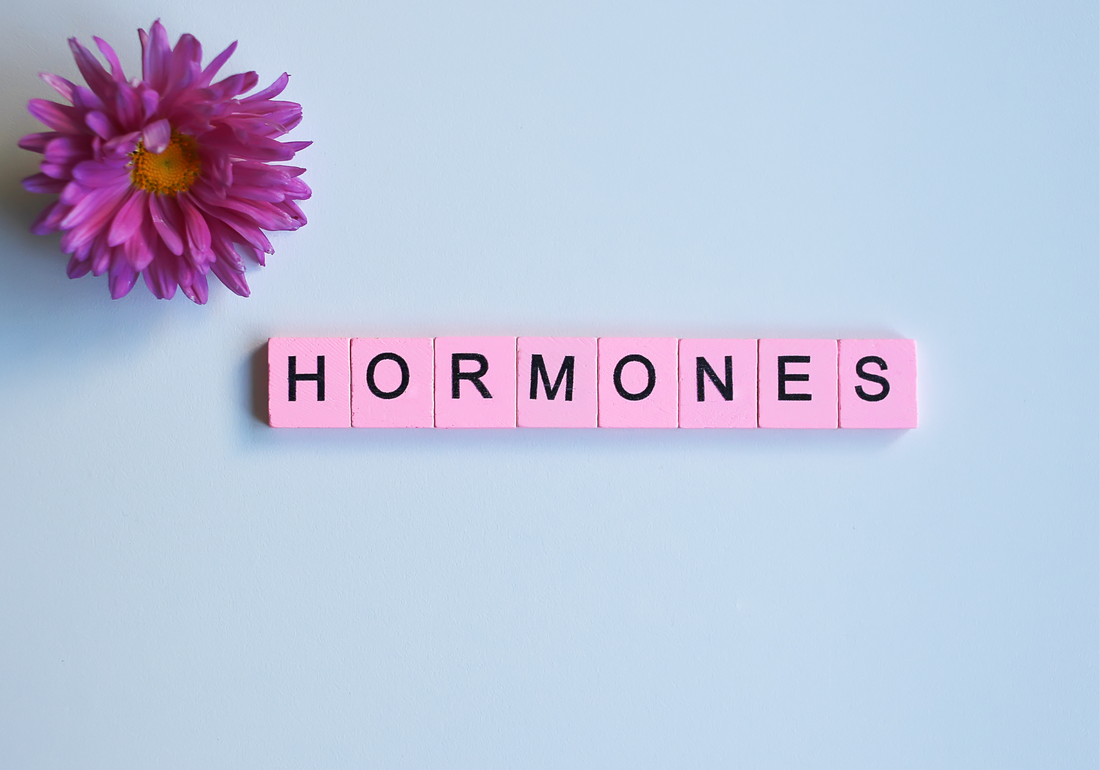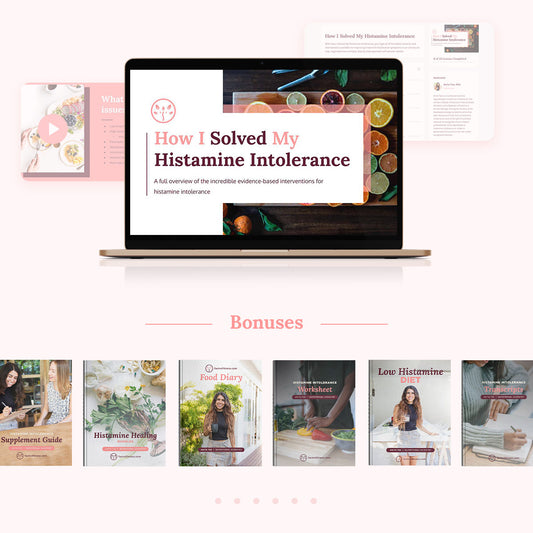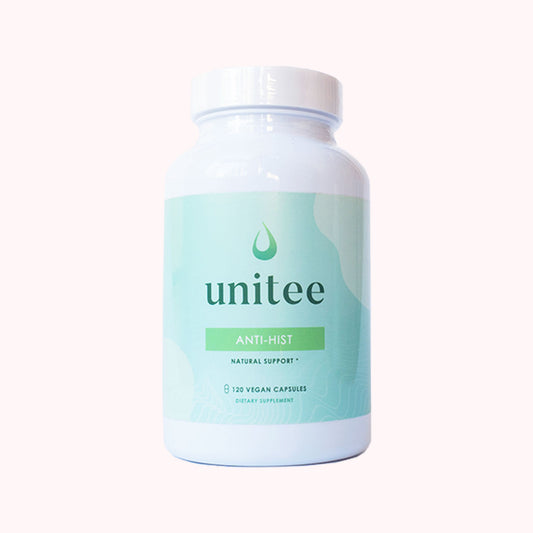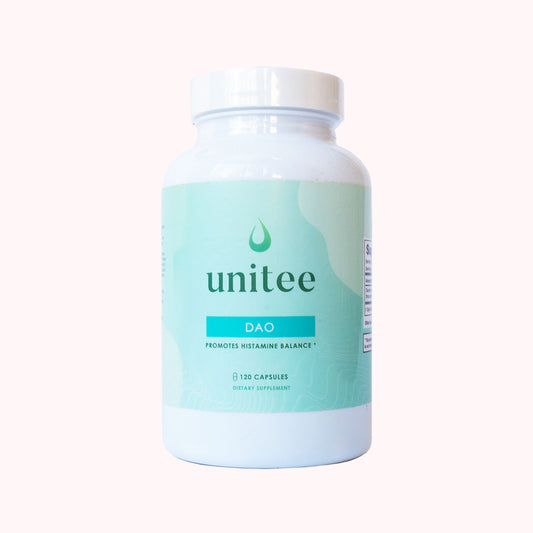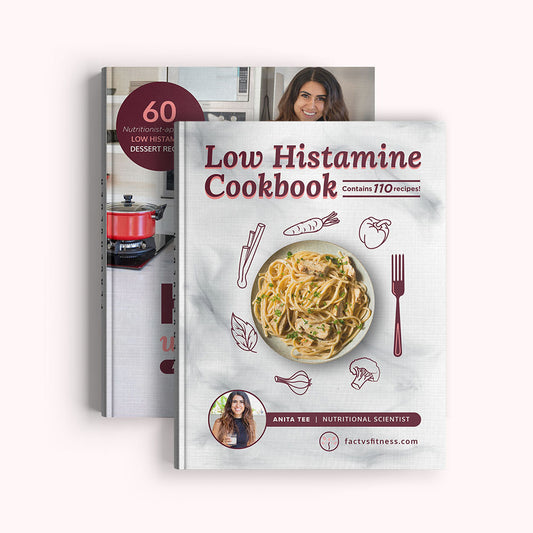There's a fascinating link between histamine and hormones...
Did you know that women are more likely to be histamine intolerant?
As a woman, we have estrogen to thank for our feminine characteristics. It’s the hormone that gives us our figure, our softer voice and allows us to have a family. Estrogen is an important part of a woman’s health and function, and imbalances have serious consequences for your overall well being.
Both low and high estrogen levels have profound and far-reaching effects, but it’s excess estrogen and its link to histamine intolerance that we want to discuss today. In fact, this link is so interesting that it explains why more women than men suffer with this debilitating condition...
Histamine and hormones: too much estrogen?
Often, we think of estrogen excess as the body making too much of the hormone. There is, however, another reason estrogen levels may increase, and that’s because of inefficient estrogen clearance.
If the body does not process estrogen effectively enough, levels will rise, and with it come those oh-so-familiar symptoms of estrogen imbalance.
If you’ve ever felt cranky, bloated, tired and your breasts hurt a couple of days before you begin your menstrual cycle, this is what I’m talking about. And, it has to do with the increase in estrogen production just before you start your period.
Now, imagine what happens when your estrogen levels don’t drop down like they’re supposed to. These yucky PMS-like symptoms don’t go away!
By now you must be wondering: what does this all have to do with histamine?
Estrogen and histamine intolerance
The class of compounds that histamine belongs to are called amines. They, too, are hormones, like estrogen.
And, just like estrogen, histamine binds to specific receptors throughout the body to produce a response, which tell the body systems to do something.
Histamine receptors are denoted by H1-H4, and they are spread throughout the body1,2. H1 is the most widely distributed, and, get this, estrogen binds to it, just like histamine does3. There’s more: estrogen also promotes the release of histamine from some of your immune cells, called mast cells. They are the cells that carry histamine around to wherever the immune system tells them to go, to the site of the body where there’s a possible attack by a foreign invader4.
These mast cells, located all across the body, are also located in the uterus and ovaries where they are stimulated by estrogen release5. Then, as histamine increases in these locations, it stimulates more estrogen to be released, creating a vicious cycle of chronically high estrogen and histamine levels.
Estrogen also has an effect on one of the most important enzymes the body uses to degrade or break down histamine, called diamine oxidase (DAO) 6. It hampers the body’s ability to make the enzyme, and so histamine is ineffectively taken care of, leading to further increased levels.
Combined, these reasons are why histamine intolerance symptoms may spike around the time of ovulation and just before your period begins. There’s also merit in considering that histamine and mast cell activation in the time before menstruation is actually the culprit that gives you period pain, heavy periods, headaches, mood swings and other symptoms of PMS, and it’s not just estrogen and progesterone changes that are the cause of these effects7.
Another intriguing finding in this regard is the change in the symptoms of histamine intolerance throughout pregnancy. Many women have a significant reduction in their symptoms like hives, runny nose, itchy eyes, etc. Some even report having recovered from their asthma as a result of their little bundle of joy. It’s because the placenta, that feeds the fetus in the uterus, makes a huge amount of DAO, which breaks down histamine and reduces the levels that the body has to deal with8, 9.
One of the best ways to figure out whether your body either needs help to process estrogen more effectively, or reduce the production, is to have your hormone levels checked. This check typically would include measuring your progesterone levels, too, as progesterone promotes the production of DAO, which naturally, would be hampered if your progesterone levels are not sufficient.
Of course, it would be great if you could test your histamine levels. Unfortunately, because of the nature of histamine and its binding, testing its levels in the blood is possible, but is not a highly reliable indication of how much you actually have flowing through your system 10.
Due to this lack of clarity in testing, I've created a at-home test for histamine intolerance that can be coupled with the hormonal testing mentioned above.
Additionally, since histamine intolerance symptoms are so responsive to high histamine foods, keeping a food and symptom diary is another great way to indicate that you have histamine issues.
But - back to hormones!
For both estrogen and histamine, there are steps you can take to manage their levels in your body.
Balancing estrogen and histamine, the natural way
Diet is one of the most effective ways to manage histamine intolerance11,12, and it also plays a role in estrogen balance. The most important thing to start with is to follow a low histamine diet that eliminates all high histamine, histamine releasing, and inflammatory foods. To receive a free comprehensive diet, click below"
Additionally, these four dietary strategies should be added while using the low histamine diet:
- Balance your intake of protein, fat and carbs. Your body needs all of the building blocks to function properly, and too little of any of these macronutrients can reduce the capacity of the immune system to function correctly and also influence how your body makes and processes hormones.
- Reduce inflammation. Inflammation is the root cause of all chronic diseases, and diet in a major influencer. In terms of histamine, foods that contain high histamine levels, or that liberate histamine within your body, or even block the DAO enzyme should be minimized in the diet. Inflammatory foods like sugar, refined grains and processed foods influence the body’s ability to manage hormone production and processing.
- Avoid hormones in foods. Just like you should try to reduce your histamine load by reducing your intake of high histamine foods, avoid foods that contain estrogen. Dairy and some animal products contain higher hormone levels. If you choose to have these in your diet, be sure to choose those from organic, pasture-raised sources to minimize the hormonal exposure.
- Avoid alcohol. In both histamine intolerance and estrogen excess, alcohol is a catalyst that can make each condition worse, so it’s best to avoid.
Histamine intolerance is not just about histamine. Often, there are other body systems that are out of balance, which can increase the load of histamine your body has to deal with.
When you discover which it is, (in this case, estrogen), you can begin to manage the imbalances, and you’ll soon realize that you can bring about a state of health once again
Life's too short to let symptoms control you.
Your histamine intolerance expert,
Anita Tee, Nutritional Scientist
References:
1. Gene Database. HRH1 histamine receptor H1, HRH2 histamine receptor. (Homo sapiens (human)] 2018. Viewed 11 August 2018.
2. Editorial / Neuropharmacology 106 (2016) 1e2. https://helda.helsinki.fi/bitstream/handle/10138/224101/1_s2.0_S0028390816301435_main.pdf?sequence=1
3. Brandes, L., et al. Evidence that the antiestrogen binding site is a histamine or histamine-like receptor. Biochemical and Biophysical Research Communications. Volume 126, Issue 2, 31 January 1985, Pages 905-910. https://www.sciencedirect.com/science/article/pii/0006291X85902712
4. Barcik W, Wawrzniak M, Akkis CA, et al. Immune regulation by histamine and histamine-secreting bacteria. Curr Opin Immunol 2017;48:108-113. https://www.sciencedirect.com/science/article/pii/S0952791517300535
5. De Leo, B., et al. Immunoprofiling of human uterine mast cells identifies three phenotypes and expression of ERβ and glucocorticoid receptor. F1000Research 2017. https://www.semanticscholar.org/paper/Immunoprofiling-of-human-uterine-mast-cells-three-Leo-Esnal Zufiaurre/c1494299212c94f02c8c36d21b9703012fcc35bb
6. Maintz L, Novak N. Histamine and histamine intolerance. Am J Clin Nutr 2007;85(5):1185-1196. https://academic.oup.com/ajcn/article/85/5/1185/4633007
7. Tsuji, S., et al. Increased mast cells in endocervical smears of women with dysmenorrhea. Cytojournal. 2018; 15: 27. https://www.ncbi.nlm.nih.gov/pmc/articles/PMC6243853/
8. Obed, B., et al. (2017) Elevated histamine model: a protocol for an ex vivo model for in vitro study of histamine effect on placenta. Protocols.io. https://repository.uwl.ac.uk/id/eprint/4081/
9. Whittaker, N., et al. Diamine Oxidase Deficiency as a Proposed Mechanism for Anaphylaxis After the Third Stage of Labor: A Case Report [2B]. Obstetrics & Gynaecology. May 2017 - Volume 129 - Issue 5. https://journals.lww.com/greenjournal/Abstract/2017/05001/Diamine_Oxidase_Deficiency_as_a_Proposed_Mechanism.65.aspx
10. Kovacova-Hanuskova, E., et al. Histamine, histamine intoxication and intolerance. Allergologia et Immunopathologia. Volume 43, Issue 5, September–October 2015, Pages 498-506. https://www.sciencedirect.com/science/article/pii/S0301054615000932
11. San Mauro, M., et al. Histamine intolerance and dietary management: A complete review. Allergol Immunopathol (Madr). 2016 Sep-Oct;44(5):475-83. https://www.ncbi.nlm.nih.gov/pubmed/27590961
12. Mauro Martin IS, Brachero S, Garicano Vilar E. Histamine intolerance and dietary management: a complete review. Allergol Immunopathol (Madr) 2016;44(50):475-483. https://www.ncbi.nlm.nih.gov/pubmed/27590961

